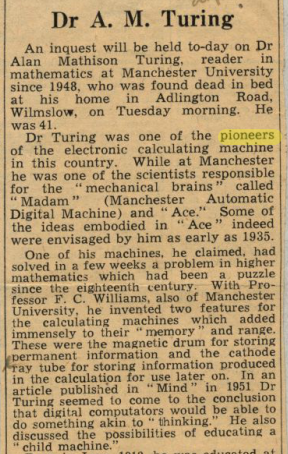Leadership
In a zeitgeist characterized by technological underdevelopment and skepticism, Turing became a leader by suggesting computers could think:
Working from very little, he ushered science into a new era by bringing mechanical intelligence into the public eye for the first time, opening it up to enrichment, analysis, and criticism.
“Turing was definitely a leader; he created the absolute earliest examples of artificial intelligence. When one pioneers such an important concept, their role as a leader is obvious. Quite simply, he created a path for other intellectuals to follow. Since he introduced AI, the field has grown immensely, to the point where it’s fair to say all modern technology owes something to Turing.” [12]
The Oxford Dictionary describes a leader as “the most advanced or successful in a particular area.” [17] Weighed against scientists of his time, Turing was certainly the most successful in his attempts to define and construct intelligent machinery.







